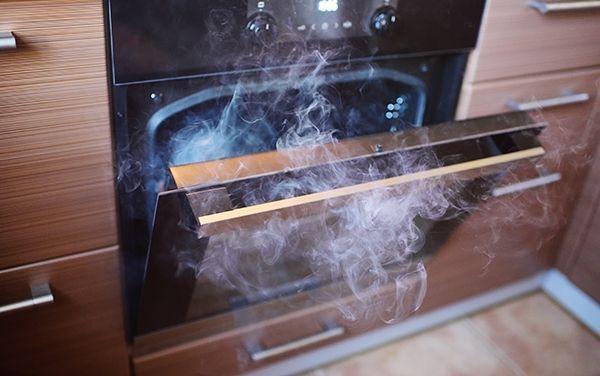Self-Cleaning Oven Dangers: What You Need to Know Before the Holidays
Self-cleaning ovens can certainly be convenient, performing all of the dirty work and delivering a sparkling clean oven. Unfortunately, this convenience can come at a price, often resulting in malfunctions and repairs. We’ll discuss self-cleaning oven dangers, like part failures, and provide an alternative, natural cleaning method to avoid holiday disasters.
The 411 on Self-Cleaning Oven Dangers
While you may want a clean oven right before the holiday season, these self-cleaning oven dangers can make you reconsider your cleaning method. But before we discuss what can go wrong, let’s get into the details. After all, knowing how the self-clean function works illustrates why malfunctions may occur.
How Do Self-Cleaning Oven Cycles Work?
A self-cleaning cycle raises the oven’s temperature to between 800-1,000℉, burning away food particles and debris. Over a period of several hours, this high heat incinerates remnants to ash that can be wiped away once the cycle ends.
While it is effective, is it safe to use self-cleaning oven cycles? High temperatures and burning food remnants can pose risks.
Why You Should Avoid the Self-Cleaning Feature Before the Holidays
In light of this information, are you wondering, “Should I use self-cleaning oven features at all?” We certainly recommend skipping the self-clean function before holidays or big events. This is because its high temperature can damage vital oven components, rendering the oven useless when you need it the most.
Here are some parts that are frequently damaged by high self-cleaning temperatures:
In addition, holidays are often busy times for appliance repair companies. This means there’s no guarantee the oven will be repaired in time for your celebration.

How to Clean Your Oven With a Natural Oven Cleaner
Fortunately, natural oven cleaners provide viable alternatives to self-cleaning oven dangers. Here’s how to make your natural oven cleaner with basic pantry staples like salt, baking soda, and white vinegar:
Step 1. Remove oven racks and surface debris: Take out oven racks and set aside. Use the scraper to remove surface dirt and food particles quickly.
Step 2. Mix cleaning paste: Combine baking soda, salt, and dish soap until it’s a spreadable paste with the consistency of frosting.
Step 3. Apply paste to oven walls: Spread a thick layer of paste on the oven walls and surfaces. Allow to sit for several hours, preferably overnight.
Step 4. Remove paste: Using a damp sponge or scrub brush, wipe down the oven walls.
Step 5. Spray with vinegar: Mix a 1:1 solution of white vinegar and water and pour into a spray bottle. Spray down oven walls and wipe away any remaining dirt and debris, repeating as needed.
If self-cleaning oven dangers can’t be avoided, our oven repair experts can help. Call Reliable Appliance Service to fix any oven malfunction.
Reliable Appliance Service
info@reliable-appliance-service.com
Reliable Appliance Service. All Rights Reserved. Trademarks and brands are the property of their respective owners.

